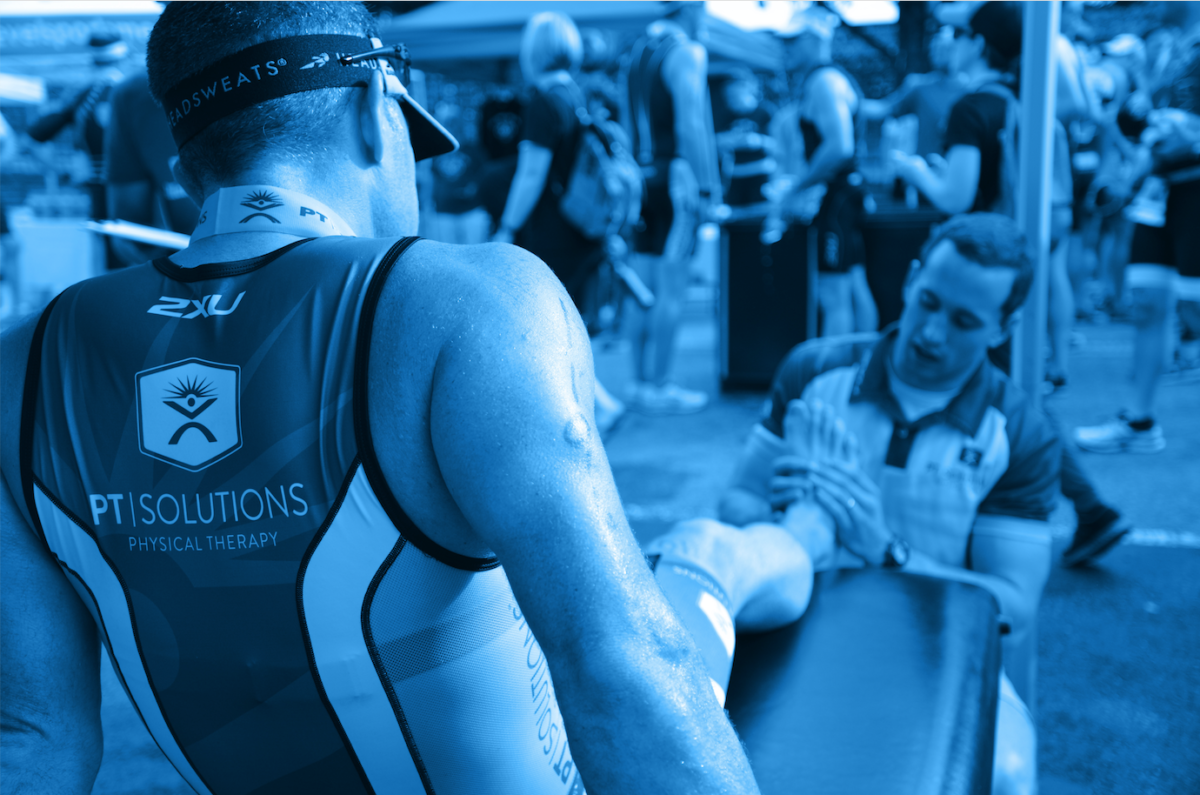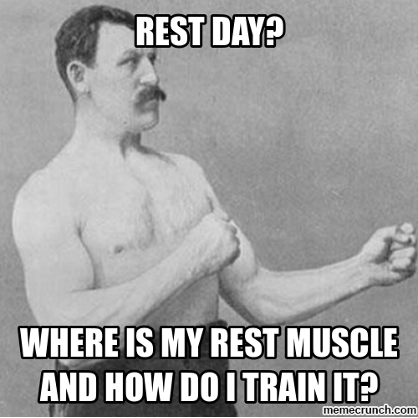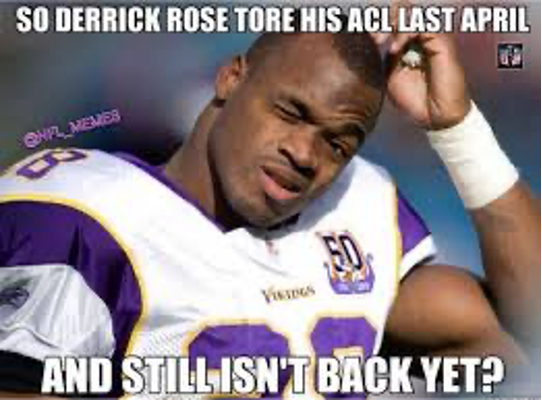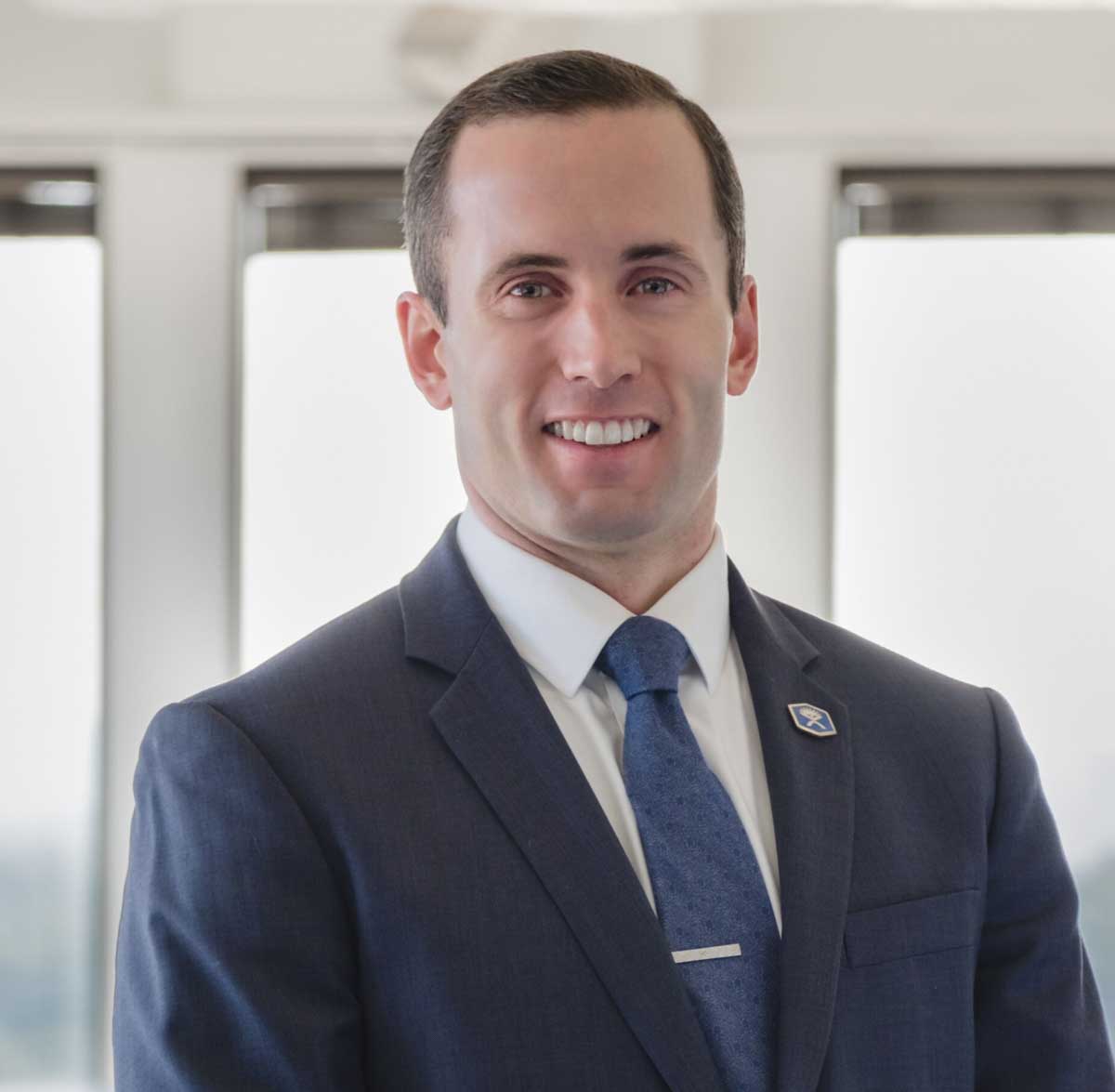Assessing return to sport and injury prevention models
There is one surefire way to prevent sports injuries: don’t participate in sports. As that is an unsatisfactory solution for nearly every athlete, we need to look elsewhere.
Thus far, I have addressed injury prevention for some of the most common ailments we treat and study. I would be remiss if I did not address return to sport. Return to sport rehabilitation largely has two goals: efficient and effective return to sport (at the pre-injury level of performance) and prevention of re-injury or a new but related injury. Many PTs, athletic trainers, personal trainers, and physicians build their careers on their ability to help athletes regain and maintain their health following an injury. The pressure can quickly mount on rehabilitation experts as the cost of the athlete missing game time is high.
The Dreaded Injury Prone Tag
Every year I partake in fantasy baseball. It is a big deal. In the latter half of February, what I consider the dead period in sports (pre-COVID-19), as football is over and the NBA is the primary entertainment, you will find me often navigating Fangraphs and various fantasy baseball sites. I have spreadsheets with player rankings, projections, and auction values. I will not go into the details of my draft strategy, partially because a few lost souls may inexplicably not be interested, but mainly because I don’t want to disclose the secret to my decade of dominance. But I will cover a key assessment that goes into the rankings: determining if someone is injury prone.
The injury prone tag is often thrown about the sports world and it can be a costly one. Sure, I can get a discount on a player in a fantasy baseball auction draft if I want to take a risk, but it can cost a player millions of dollars in real life. Take Tua Tagovailoa as an example. The Miami Dolphins entered the 2019 NFL season with the moniker of “Tank for Tua.” Before the 2019 college football seasons started, he was the surefire future number one overall selection; then he fractured his hip. This hip fracture occurred after quickly returning from ankle surgery.
The previous season – 2018 – he returned from ankle surgery in only 5 weeks. While his initial game back was a success, thumping Heisman Trophy winner Kyler Murray and the Oklahoma Sooners in the semi-finals, the championship game was a struggle. It could have been because of differing levels of competition – the Clemson defensive line did have 4 picks in the first 4 rounds of the following NFL draft – or perhaps he simply did not have enough time to recover and the injury caught up with him.
The 2019 season was off to a Heisman worthy start until he suffered a similar high ankle sprain on the opposite leg. Like the previous season, Tua elected to undergo the same surgical procedure. This time, however, he returned after only 3 weeks. While he was rusty in the first game back, he put on a show in the second half. Although, it was clear he was not moving with the same sharpness and speed as pre-injury.
The second game back, an ankle sprain was the least of Tua’s worries. While being sacked, his knee was driven into the ground and he suffered an acetabular fracture. As a Dolphins fan, my hopes for a competent Dan Marino replacement – 20 years later but who is counting – were crushed.
Controversy swirled whether Tua should have been in the game. It was the final drive before half time, and they had a commanding 35-7 lead. Should he have even played in the game at all? Questions then progressed to his future playing career. Throughout the rehabilitation and NFL draft process, everyone wanted to know Tua’s medical status. The injury prone label had been firmly affixed. Could that have been avoided? Was Tua improperly rehabbed?
He was eventually drafted by the Dolphins at #5 overall in the draft in April and so far has not disappointed. As a Dolphins fan, I am desperately hoping our “lefty Drew Brees” stays healthy. Passing on the original Brees was painful enough (thanks Saban). I believe Tua can overcome the label if the multifaceted contributions to his previous injuries are addressed. And herein lies the million-dollar question. What are the appropriate return to sport criteria?
The difference between ‘Return to Sport’ and ‘Return to Practice’
When rehabilitating an athlete, the terminology ‘Return to Sport’ is commonly used. This can be a problem as it suggests athletes progress from clinic to competition. The ramp is too steep. Instead, we should focus on return to practice and ramping sport-specific demands prior to racing back to games.
The continuum and definitions from the 2016 Consensus Statement on return to sport from the First World Congress in Sports Physical Therapy are as follows:
-
Return to participation (RTPa): The athlete may be participating in rehabilitation, training (modified or unrestricted), or sport, but at a level lower than his or her RTS goal. The athlete is physically active, but not yet ‘ready’ (medically, physically and/or psychologically) to RTS. It is possible to train to perform, but this does not automatically mean RTS.
-
RTS: The athlete has returned to his or her defend sport but is not performing at his or her desired performance level. Some athletes may be satisfied with reaching this stage, and this can represent successful RTS for that individual.
-
Return to performance (RTPf): This phase is an extension of the RTS phase. The athlete has returned to his or her defend sport and is performing at or above his or her pre-injury level. For some athletes, this stage may be characterized by personal best performance or expected personal growth as it relates to performance.
Consistent with injury-prevention literature, a multi-modal approach appears to be the best option, but what are the best variables to assess? The 17 experts who developed the 2016 Consensus Statement advocate for the use of injury-related and non-injury-related variables in developing RTS criteria. It is important to note that studies demonstrating an average return to sport times are not reporting symptom resolution and recovery times. Many athletes return to sport far below the 100% performance mark. Strictly using pain as a guide can be misleading
A 2014 study on time to RTS in high-school athletes observed that a 95% probability exists for a full return to sports participation within 10 days after a first-time ankle sprain injury. However, an even more recent systematic review (2019) reported that individuals who sustained a lateral ankle sprain still exhibited increased ankle ligamentous laxity, reduced self-reported function, restriction of dorsiflexion range of motion, and impaired dynamic postural balance at the RTS time point (mean ± standard deviation 12.7±10.0 days). Consequently, these authors suggested that athletes with a lateral ankle sprain require more extensive care to resolve impairments before they should be allowed to RTS.
Should time even be used as a variable? Based on the research, there is a strong argument it should not, however, applying that mindset to clinical practice is easier said than done. Patients come in with their own set of expectations.
Professional Athletes Are Not The Standard
Jerry Rice and Adrian Peterson put up MVP-level campaigns within a year of tearing their ACL. The surgeon may have provided a timeline for 9-12 months. Anecdotal experiences of friends, family, and coaches strengthen the belief that all patients should meet the same standard of return to play. But we are not all created equal.
Adrian Peterson could squat 500 pounds before tearing his ACL. Even with significant post-surgical atrophy, his muscle mass and strength far exceeded the average patient. Peterson and Rice also have the benefit of a 24/7 focus on their rehabilitation. They don’t come in for rehab three times a week for an hour each session, they perform 6-8 hours of rehab daily. They have structured diets. Many professional athletes even have scheduled naps. We are not comparing apples to apples. Further complicating the issue, regardless of a patient’s access to care, there are many external pressures to return to sport sooner, even with the understanding of differing physiology.
Depending on the level of competition, there are external motivations from coaches, parents, friends, teammates, boosters, the media, and fans. Internal motivation can come from a desire to obtain a scholarship, endorsement, money, or fame. Perhaps you risk losing your starting job or the school record you are shooting for is falling further out of reach the longer you are sidelined. There are many drivers behind a desire to return to the field sooner. If we rely on pain, generic timelines, and basic, controlled tests and measures, the patient will not be ready for the rigors of competition.
Comprehensive return to play assessment
The figure highlights the StAART framework for return-to-play. Note the progression of risk assessment.
Many players return to play protocols stop midway through step two. Once a player demonstrates adequate strength and power – only 90% of uninjured limb, not even full strength and power – they are cleared to return to sport. While some athletes may have access to athletic trainers who can continue to guide their progression, many do not.
To assess whether an athlete is ready for activity outside the clinic, it is imperative to integrate open environment activity during the sessions. Design exercises that have a level of unpredictability in which the patient needs to react, as opposed to prospectively planning every move. Additionally, the sessions need to induce significant fatigue. Our strength, power, and motor control all diminish when in a fatigued state. The time to address movement concerns is in the clinic, not during a scrimmage or live game.
The expected progression of care and specific checkpoints need to be covered at the beginning of the plan of care. Using motivational interviewing to assess the patient’s expectations will allow you to best educate and reframe those expectations. Use a battery of tests and measures that directly translate to the field. For example, manual muscle testing only assesses strength in a single plan of motion isometrically. Furthermore, the sensitivity is poor. Strength deficits can remain despite scoring 5/5. We need to assess concentric and eccentric strength at varying speeds as well. Developing a comprehensive program, with relevant testing, will show the patient that you understand the demands of their sport. You will build trust and strengthen their confidence in their ability to complete a successful rehab. Some patients may not be ready and are only agreeing to return to play because of the aforementioned pressures and the therapist discharging them from care. By using a structured return to play strategy, with the athlete and all relevant stakeholders on the same page at the beginning, you will improve the chances of success when transitioning the patient from the clinic to the field
The evolution of injury prevention
So, what does work for injury prevention? Ironically, and somewhat unhelpfully, exercise is likely the best option. Yes, exercise can often lead to injury, especially overuse injury. The key lies in the methodology of exercise intervention. A 2014 systematic review and meta-analysis in the British Journal of Sports Medicine assessed the effectiveness of exercise interventions to prevent sports injuries. They concluded the following:
In general, physical activity was shown to effectively reduce sports injuries. Stretching proved no beneficial effect, whereas multiple exposure programs, proprioception training, and strength training, in that order, showed a tendency towards an increasing effect. Strength training reduced sports injuries to less than one-third. We advocate that multiple exposure interventions should be constructed on the basis of well-proven single exposures and that further research into single exposures, particularly strength training, remains crucial. Both acute and overuse injuries could be significantly reduced, overuse injuries by almost a half. Apart from a few outlying studies, consistently favorable estimates were obtained for all injury prevention measures except for stretching.
Injury prevention and injury etiology models have evolved substantially over the past few decades. One of the consistent themes when assessing rehabilitation and prevention of re-injury is load management. One of the most frequently cited articles in the field of injury prevention is the 1992 Sports Medicine paper “Incidence, severity, etiology and prevention of sports injuries.” van Mechelen proposes any injury prevention effort should follow four sequential steps: establish the extent of the sports injury problem, establish the etiology and mechanism of sports injury, introduce preventive measures, and assess the effectiveness of these preventive measures by repeating step 1. He goes on to describe three areas that must be addressed when determining the risk of injury.
We must consider the stress capacity of an individual, assessing both internal and external factors. We must look at physical and psychosocial factors. Lastly, we must look at the stress-strain capacity, specifically addressing the influence of chronicity. Here is a model proposed two years later by Meeuwisse.
A 2005 paper by McIntosh expanded on this model to include many specific factors contributing to injuries. Note the addition of supervision and coaching. This is a major factor in our return to practice and return to sport phases of treatment, and it differentiates skilled PT from HEPs. Furthermore, when a patient is in the clinic or rehabbing with an athletic trainer, are they provided a series of exercises to run through with minimal supervision, or are they systematically guided through a program with subtle changes based on performance? Recognizing the patient’s motivation, perception, and fatigue are all factors to address for both performance and minimizing the chance of injury. Going back to pitching, fatigue is one of the greatest risk factors for injury. The dangers of relying solely on pitch counts and innings limits is the potential for an athlete to throw too much. Often, the athlete shows signs of fatigue and diminished performance before an objective threshold is met. In these cases, careful monitoring may lead to a decision to remove the athlete from the game earlier than originally intended.
Summary and Recommendations for Injury Prevention and Return to Sport
Let’s start by looking at a single risk factor and the potential influence of others. A commonly cited risk factor of ACL tears is knee valgus during landing; I briefly covered this part 1 of this series. Research has shown knee valgus during landing, 50ms after initial contact, generates a 5-fold increase in ACL injury risk in female compared to male athletes (relative risk (RR)=5.3, p=0.002). However, the event is never isolated and the sole factor influencing the potential for injury. We can layer on the influence of the ankle.
Research has suggested restriction in ankle dorsiflexion range of motion can impact landing mechanics. However, the impact is relevant to the training load. Does the athlete perform a high frequency of vertical jumps and are they at sufficient amplitude to develop fatigue and potentially damaging levels of mechanical energy transfers? If the ankle dorsiflexion is restricted, the energy dissipation could be poor and transfer excessive amounts to the knee. Furthermore, the training load is influenced by the demand of coaches, the level of competition, the type of event (practice versus playoff game), and the period of a game (beginning when fresh versus the end when fatigued). Knowing all this, do we even need to perform single-leg motor control training, or do we simply need better overall conditioning and improved ankle mobility? Would addressing either correct the knee valgus upon landing? Would failure to address them make any motor control training irrelevant? This is just one of many examples of how a Satisfaction of Search bias and narrow framing can blind our clinical decision making. Bittencourt summarizes this concept with the following:
Regarding sports injuries, the athlete should be analyzed as a complex system and the research focus would be on how relationships between units (i.e. biomechanical, behavioral, physiological and psychological) give rise to the collective behavior of the athlete and how the athlete interacts and forms stable relationships (regularities) with his/her environment.
When designing a program to address return to sport, we must consider the complexity of the environment. Traditionally, rehabilitation is performed in a closed environment. A closed environment is one that is controlled and predictable. In the clinic, patients know the sets, reps, and training load. They do not have to react to unknowns, such as an opposing athlete on the field, and they can stop at points of pain or extreme fatigue. Often, clinicians fail to push a patient hard enough to induce fatigue and may prematurely stop an exercise at the slightest discomfort or first sign of form breakdown. Moving directly from the clinic to the field is an easy way to increase the odds of a second round of rehab.
On the opposite end of the spectrum, we have an open environment. When in practice or a game, we have to react to unknown variables: the opposing players, rapid shifts in strategy, fans, referees, field conditions, and teammates. In addition, we often push ourselves more physically, mentally, and emotionally when in the heat of the competition. All of these variables add to the risk of injury. While impossible to completely replicate all these in the clinic, we can build off the traditionally prescribed exercises. The trick, however, is being able to address as many potential factors as possible, yet focusing on the most likely to cause injury.
The following graphic illustrates the complex web of risk factors for a basketball player and ballet dancer suffering an ACL injury. The primary clinical risk factors are bolded but the modifying factors are connected. When designing a rehabilitation and training program, we must consider all the potential variables that can cause the observed risk factor. Dynamic knee valgus can certainly be addressed with hip strengthening and motor control, but if training is only performed in a controlled environment with minimal fatigue, the performance will quickly deteriorate in a practice or game.
Zach Walston (PT, DPT, OCS) grew up in Northern Virginia and earned his Bachelor of Science in Human Nutrition, Foods, and Exercise at Virginia Polytechnic Institute and State University. He then received his Doctorate of Physical Therapy from Emory University before graduating from the PT Solutions’ Orthopaedic Residency Program in 2015.
Zach has numerous research publications in peer-reviewed rehabilitation and medical journals. He has developed and taught weekend continuing education courses in the areas of plan of care development, exercise prescription, pain science, and nutrition. He has presented full education sessions at APTA NEXT conference and ACRM, PTAG, and FOTO annual conferences multiple platforms sessions and posters at CSM.
Zach is an active member of the Orthopedic and Research sections of the American Physical Therapy Association and the Physical Therapy Association of Georgia. He currently serves on the APTA Science and Practice Affairs Committee and the PTAG Barney Poole Leadership Academy.



